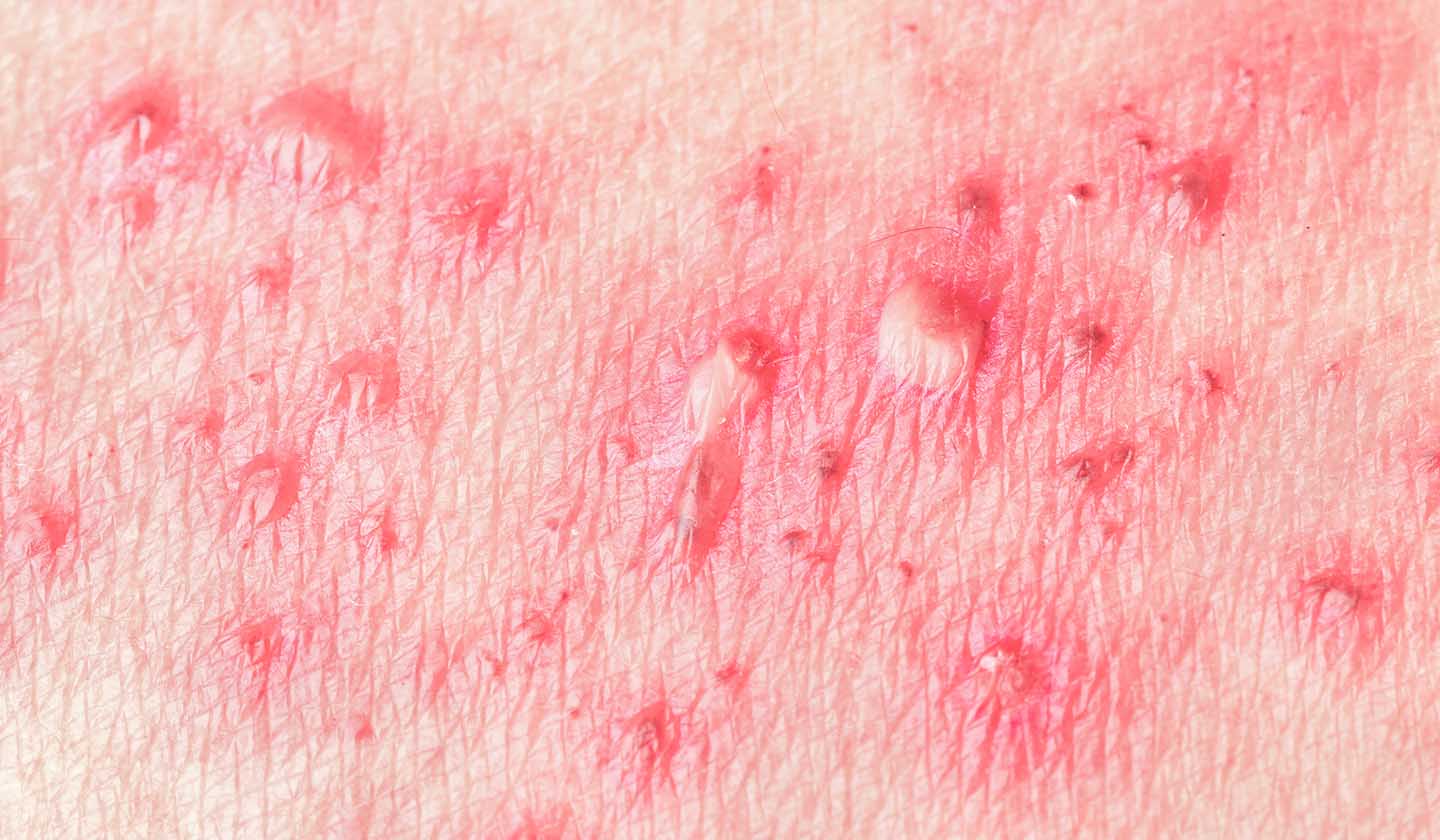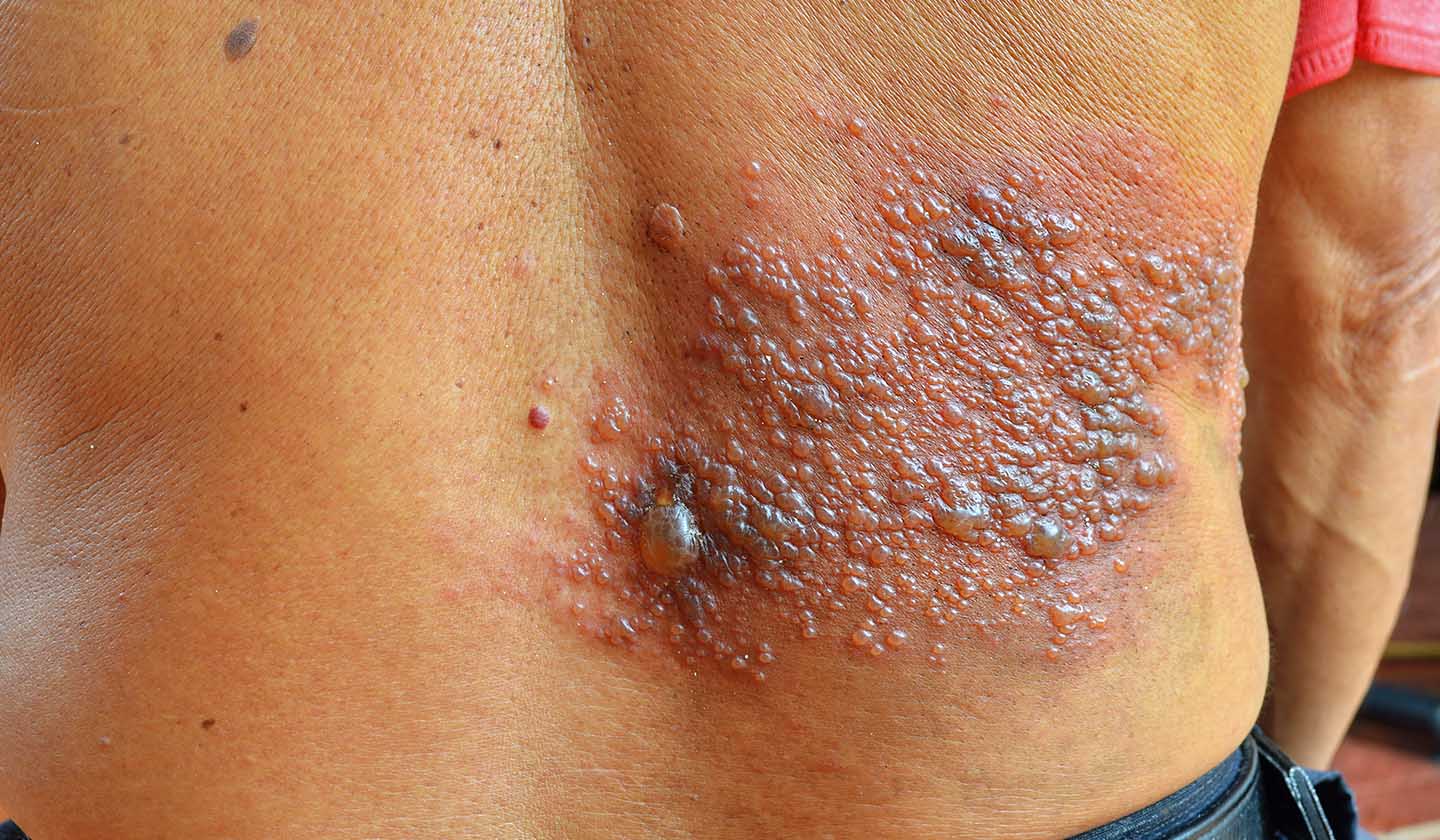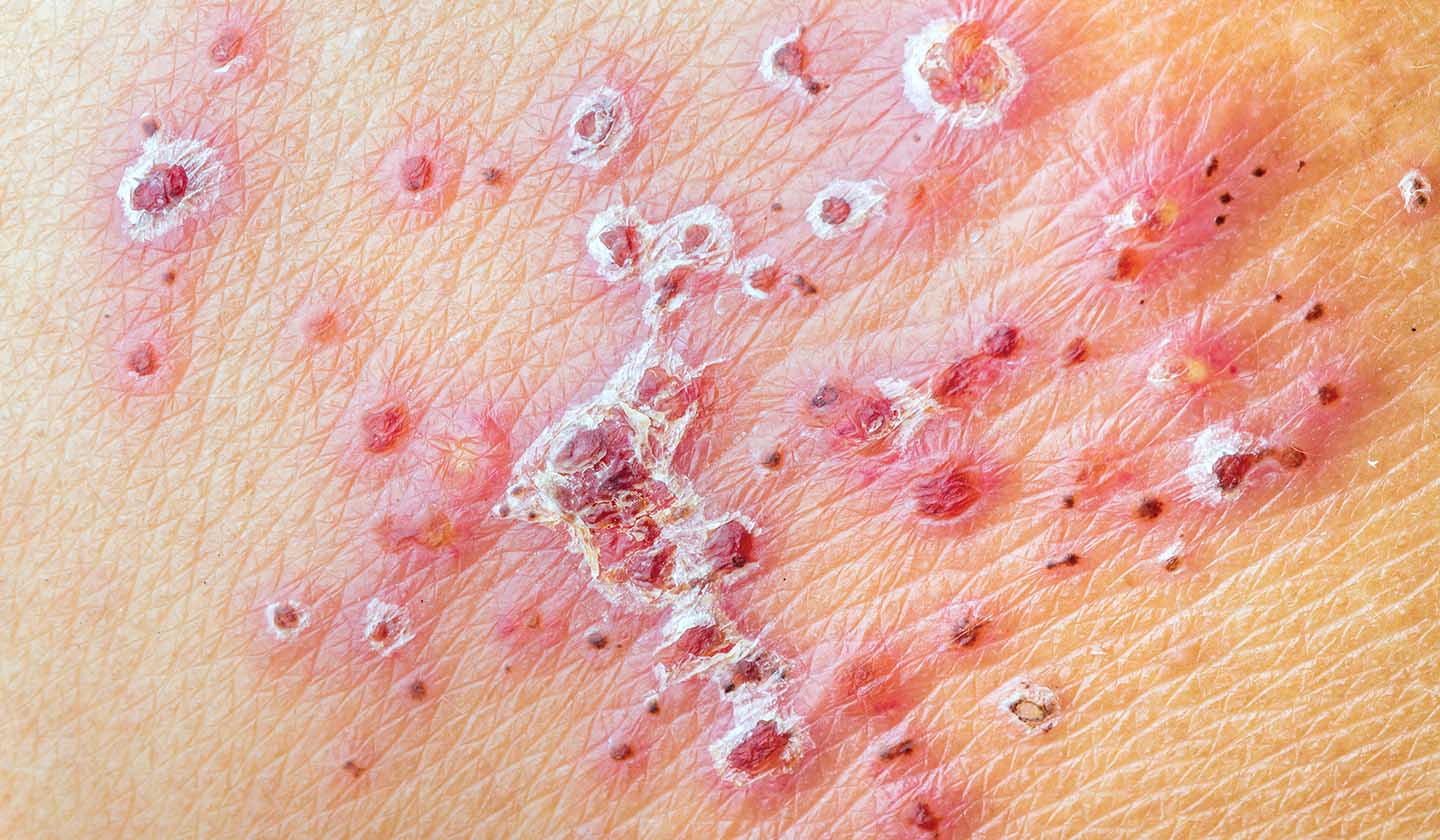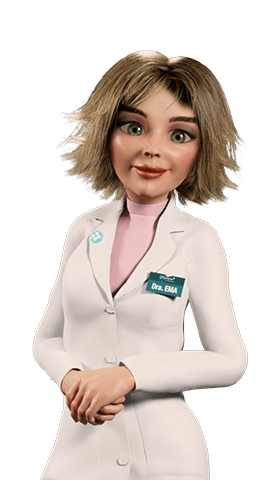Infections
Zone, that sleeping monster

Shingles, also known as herpes zoster, is an infection manifested on the skin and caused by the reactivation of the same varicella-zoster virus of the Herpes-virus family. After the chickenpox infection, the virus remains dormant in the nervous system. It can be re-activated in the form of shingles associated with age or with a weakened immune system.
Anyone who has had chickenpox can develop the disease, which is rare in children, but it is common in adults.

Symptoms
The symptoms start with intense pain and a few days later red rash appears, evolving to vesicles and later to crusts.
The initial symptoms of shingles, before the formation of vesicles, may include:
-
Pain
-
Burning feeling
-
Local tingling
-
Itching (less intense than in chickenpox)
-
Fever
-
Headache
-
Abdominal discomfort
-
Cutaneous hypersensitivity
These symptoms are often mistaken for kidney cramps, urinary infections, herniated discs, or muscle pain.
The pain can be very disabling and last for months or even years (post-herpetic neuralgia).
Following these symptoms, small clusters of blisters (vesicles) with fluid appear, grouped over a reddish area. The vesicles may join together in larger blisters and ooze pus, forming drier crusts.
Although these clusters can appear in any area of the body, they are more commonly seen on one side of the thoracic region and usually end right in the mid-line of the body. In people with a very weakened immune system these blisters can spread throughout the body skin.
A person suffering from shingles cannot transmit the disease to others through contact. However, a person suffering from shingles can infect others with chickenpox if they have never contracted the disease.

Risk factors:
-
Age over 50;
-
Contact with another person with chickenpox or herpes zoster;
-
Spine surgery;
-
Weakened immune system (chemotherapy, radiation therapy, post-transplant, HIV, leukaemia);
-
Severe infection or trauma;
-
Psychological stress.
Until the crust phase of the lesions is reached, you should avoid contact with:
-
Pregnant women who have never had chickenpox and who are not vaccinated against it;
-
Premature or low-birthweight babies;
-
People with a weakened immune system, such as people taking immunosuppressants or chemotherapy, who have had transplantation, and HIV patients.

Care to be taken/treatment:
-
Medical prescription of antiviral drugs, in the first 72 hours after the formation of the lesions, shortens the duration of the disease and the risk of complications.
-
Pain relief with analgesic or anti-inflammatory drugs while the vesicles do not dry out.
-
General skin care, such as the use of creams or lotions, in order to avoid possible secondary infections.
-
Wearing loose, light clothes.
-
The herpes zoster vaccine does not guarantee total protection, but it reduces the probability of suffering from the disease and has been approved for people over 50.
Sources
iSaúde
Farmácia Distribuição Magazine
Também lhe poderá interessar
Dermatology
Chilblains - A shiver on the skin
Dermatology






